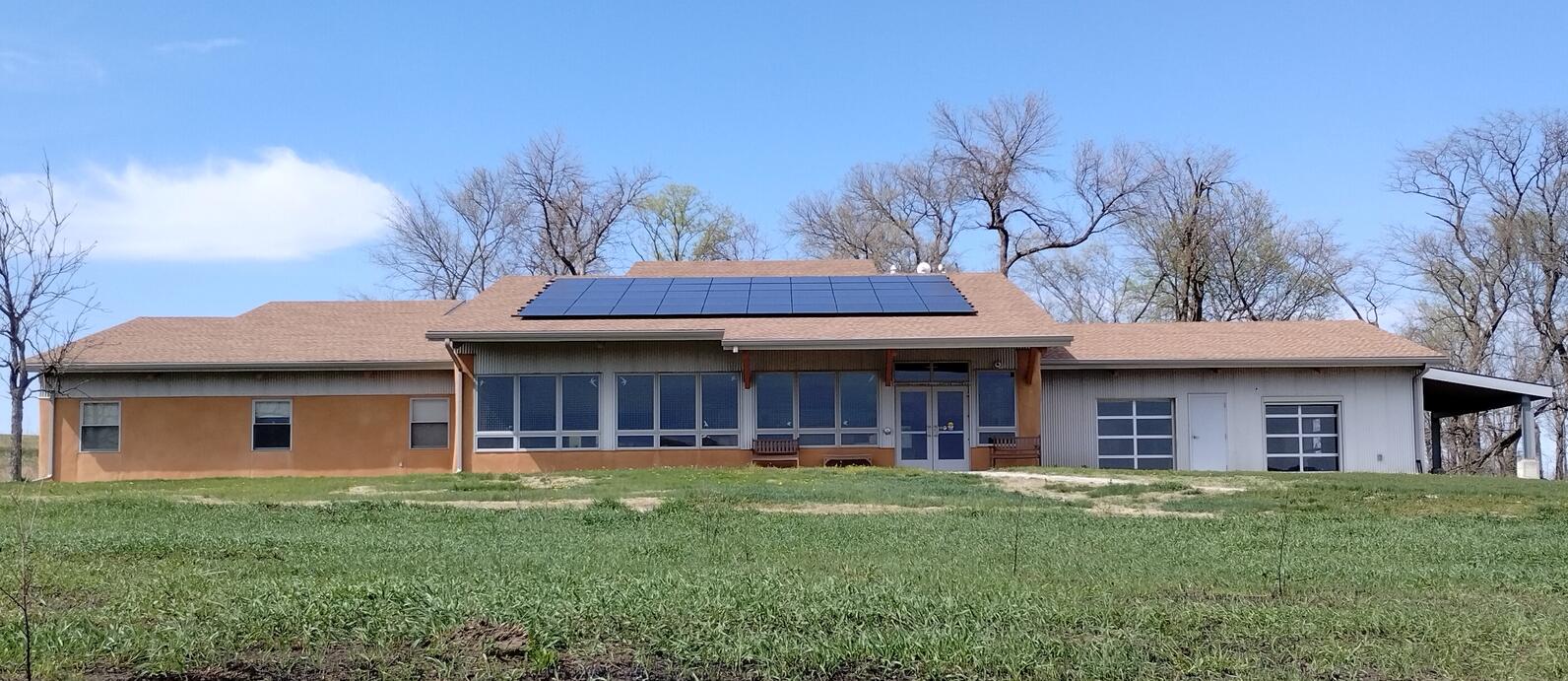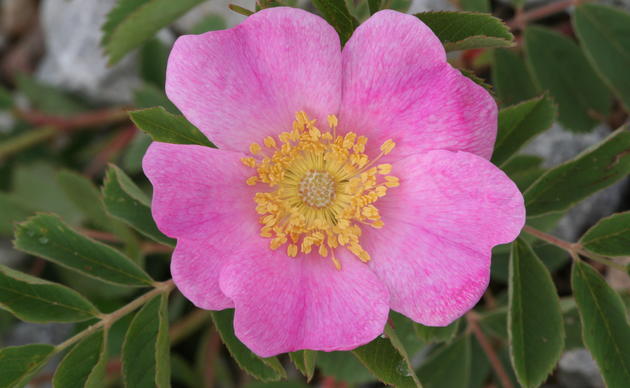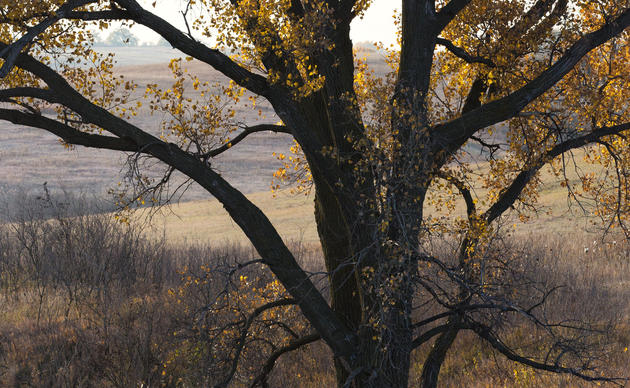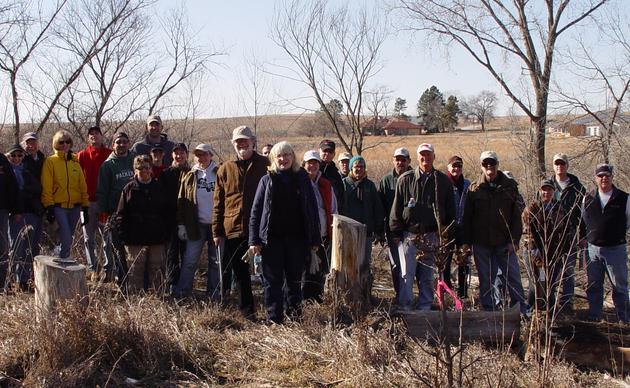In many ways, the education building we opened in 2006 embodies all the components of our organization’s mission. To preserve Nebraska’s native tallgrass, the source of our area’s natural and cultural history, first we must help people understand its value. The educational building supports these activities, such as providing educational services, coordinating efforts with regional partners to advocate for prairie preservation, and planting the seeds of a community that cares about their prairie.
The site we chose maximizes passive solar exposure and is situated upon a previously disturbed location just next to the existing windbreak. Some of the primary goals we literally built into it are reflected in its energy efficiency, and in the use of both salvageable and reclaimed materials and renewable, sustainably harvested materials. It is built using straw-bale construction techniques, a technique developed in the Nebraska Sandhills in the early 1900s. Other green features, like low-flow toilets, discourage wasting natural resources. The building is has accessible walkways from the parking and to the pond and pedestrian bridge. Inside, there are automatic entrance and bathroom door openers.
In 2024, Audubon Nebraska received a grant from the Nebraska Environmental Trust to install solar-powered electrical systems to the roofs of the visitors centers at Spring Creek Prairie and Rowe Sanctuary. In early 2025, both systems were installed and are generating clean, efficient energy for our visitor centers. By producing our own clean energy, we are reducing emissions of greenhouse gases and improving the air quality for the region.

The roof’s design intensifies nature’s efficiency, blocking summer rays and inviting the sun to help heat it in winter. By super-insulating both walls and roofs, we model the responsible behavior our educational initiatives encourage. Many features, like adjustable-speed fans and solar lighting immediately outside the building along the trails, reinforce our green approach. For more specific details on the green initiatives employed in our education building, click the attachment below.
Air Quality Monitor
The Lincoln-Lancaster County Health Department installed an air quality sensor on the visitors center. This sensor provides publicly available, real-time air quality data, which can be seen in the box below.
Related Files:
How you can help, right now
Keep in Touch
Here's how you can keep in touch with all the activities and programs at Spring Creek Prairie Audubon Center




